Léonard Limousin (1506-1575)
Get a Limousin Certificate of Authenticity for your painting (COA) for your Limousin drawing.
For all your Limousin artworks you need a Certificate of Authenticity (COA) in order to sell, to insure or to donate for a tax deduction.
Getting a Limousin Certificate of Authenticity (COA) is easy. Just send us photos and dimensions and tell us what you know about the origin or history of your Limousin painting or drawing.
If you want to sell your Limousin painting or drawing use our selling services. We offer Limousin selling help, selling advice, private treaty sales and full brokerage.
We have been authenticating Limousin and issuing certificates of authenticity since 2002. We are recognized Limousin experts and Limousin certified appraisers. We issue COAs and appraisals for all Limousin artworks.
Our Limousin paintings and drawings authentications are accepted and respected worldwide.
Each COA is backed by in-depth research and analysis authentication reports.
The Limousin certificates of authenticity we issue are based on solid, reliable and fully referenced art investigations, authentication research, analytical work and forensic studies.
We are available to examine your Limousin painting or drawing anywhere in the world.
You will generally receive your certificates of authenticity and authentication report within two weeks. Some complicated cases with difficult to research Limousin paintings or drawings take longer.
Our clients include Limousin collectors, investors, tax authorities, insurance adjusters, appraisers, valuers, auctioneers, Federal agencies and many law firms.
We perform Léonard Limousin art authentication, appraisal, certificates of authenticity (COA), analysis, research, scientific tests, full art authentications. We will help you sell your Léonard Limousin or we will sell it for you.

The Resurrection (detail), ca. 1553. Copper with enamel and gilding, 106 by 74 cm. Louvre Museum.
Léonard Limousin, or Limosin, (ca. 1506- ca. 1575) was an enamel artist working in Limoges, France. Like other contemporary Limoges enamellers, such as the Penicauds and Pierre Reymond, Limousin began working with traditional and religious imagery before establishing himself as an important court portraitist.
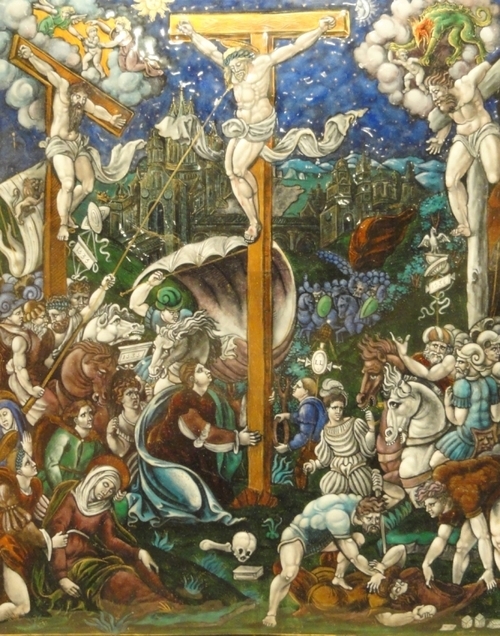
Léonard Limousin, The Crucifixion
His earliest known works date to around 1533 and depict subjects such as the Passion and the Last Judgment after engravings produced by Albrecht Dürer. Even at this early stage in his career, Limousin’s technique shows his gift for brilliance, elegance, and freedom of design.
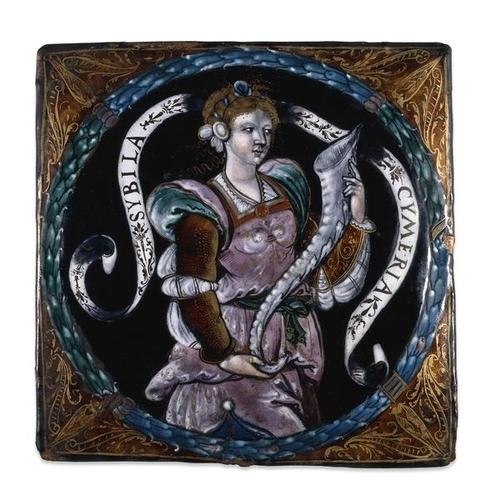
Cimmerian Sibyl, ca. 1535-1540. Copper and enamel with gilding, 13 by 13 cm. The British Museum
Around 1535, Limousin is introduced by French counselor and ambassador, to Francis I, to the court at Fontainebleau. Limousin’s sensitivity to Italian mannerism can be traced to this period as a product of his experience with artists such as Il Rosso and Francesco Pellegrino. One of Limousin’s most well known series was produced around this time consisting of 21 apostles, prophets, and sibyls, and relies upon a similar cycle produced by Primaticcio.
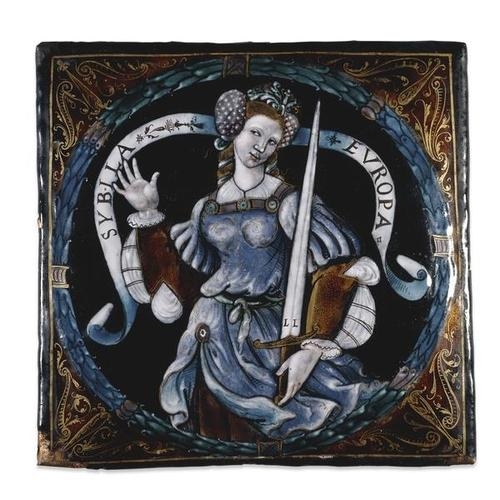
European Sibyl, ca. 1535-1540. Copper with enamel and gilding, 13 by 13 cm. The British Museum.
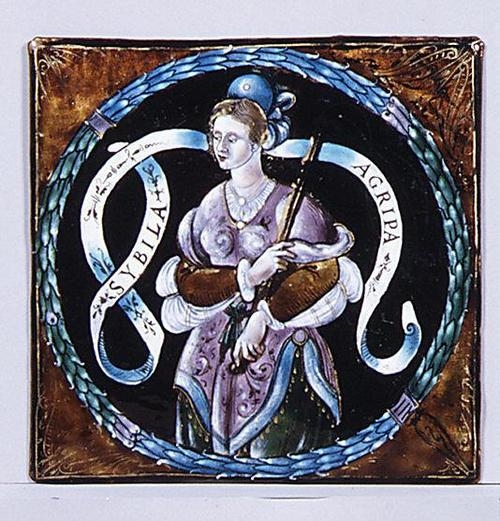
Sibyl of Agripa, ca. 1535-1540. Copper with enamel and gilding, 13 by 13 cm. The Metropolitan Museum of Art.
Under Francis I, the fashion of portraiture was beginning to surface and gain popularity. Undoubtedly, the works produced by Limousin during these years would begin to build a reputation for his work in portraiture. Limousin’s fame and career as an artist would be further secured in 1548, when under the reign of Henry II, Limousin was named the official “esmaileur peintre”, or painter and enameller.
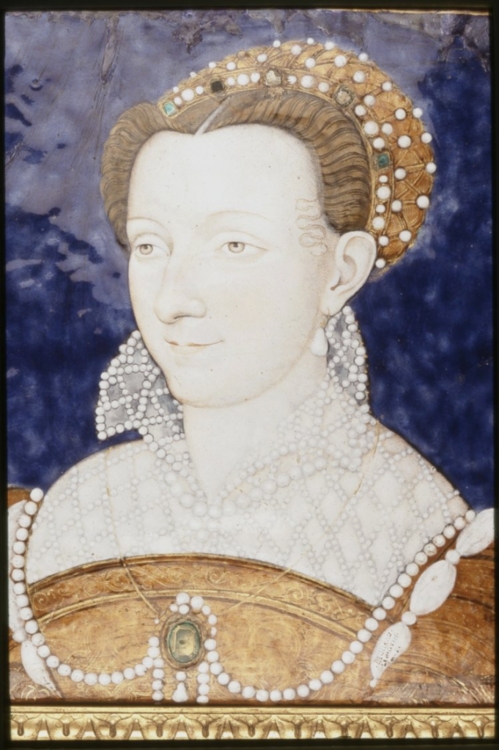
Portrait of a Woman, possibly Anne d’Este, mother of Catherine de Lorraine, ca. 1555-1560. Copper with enamel and gilding, 30 by 24 cm. The British Museum.
The difficulties of working subtle tones and color variation are nearly abandoned in his enamel works. The profile of Henry II stands, stark and pale, against a brilliant background of lapis lazuli. In many portraits produced by Limousin, the elements of the face are delineated stiffly and stylized, more consistent with caricature. Instead, Limousin opts for decorative details such as the pearled collar and head covering worn by Anne, or the fur collar worn by Henry II. Notably, he treats his contemporary subjects with similar treatments he uses for mythological subjects, such as the portrait of Aeneas. The simplicity and symbolism inherent in his portraits would make these enamel plaques popular not only as portraits, but also as decorative pieces.
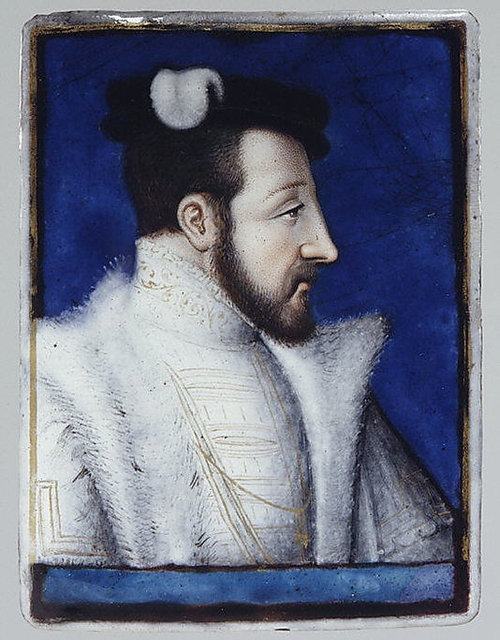
Henri II, King of France, ca. 1555-60. Copper with enamel and gilding, 8.9 X 6.8 cm. The Metropolitan Museum of Art.
The plaques produced by Limousin were coveted by collectors throughout the ages. These works were integrated into the decoration of the hôtel of Catherine de’ Medici, the castle of Anet, and though many were lost some would later resurface in such illustrious collections as seen in the Metropolitan Museum of Art and the British Museum.
Though the exact date of Limousin’s death continues to be unknown, his last signed work known is dated to 1574. Limousin’s workshop is accredited with producing more than 1,000 individual enamel pieces, in addition to drawings, prepatory works, and engravings. Only one painting by Limousin is known to survive, The Incredulity of Saint Thomas, 1555. Do you think you own a work by Léonard Limousin? Contact us. We are the Limousin experts.
Reviews
1,217 global ratings
5 Star
4 Star
3 Star
2 Star
1 Star
Your evaluation is very important to us. Thank you.
